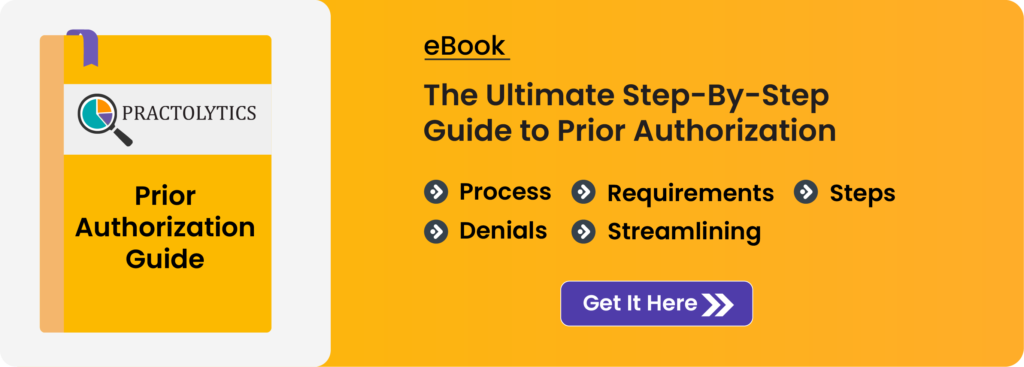How Pre-Authorization Delays Can Impact Patient Care and Revenue
For certain medical services, insurance companiesed to know how pre-authorization delays can impact patient care and revenue from healthcare providers. Prior authorization is a procedure that guarantees patients receive the right care. The pre-authorisation procedure was created to guarantee medical necessity while cutting costs. Nevertheless, it currently plays a major role in the discomfort, inefficiency, and harm caused by the healthcare system. It takes a lot of time and work to obtain these qualifications. The quality of patient care and the financial security of healthcare providers may suffer significantly as a result.
Table of Contents
Patient’s Plight: A Deterioration of Care
Delays in pre-authorization have significant negative impacts on patients. These delays are the most concerning aspect of the issue. These administrative obstacles compound worry, anguish, and potential medical problems. They worsen the situation for those already facing health issues.
1.The most serious outcome is probably being denied or having access to necessary care delayed. Consider a patient with a terrible illness waiting for a vital specialized drug, or a patient with persistent pain who requires a precise diagnostic MRI. Weeks or even months of waiting may result from pre-authorization delays. Depending on the circumstances, the patient’s health and suffering may deteriorate and the wait may result in permanent damage or even death. Action must be taken immediately, but even a few days of delay can have a major effect on the prognosis for disorders like some types of cancer or heart problems.
2.The medical industry is a demanding one. Patients may become more anxious and stressed as a result. Patients frequently battle with concerns regarding their financial stability. They are also uncertain about their health and future. The bureaucratic process of pre-authorization can be somewhat burdensome. It could be too much to handle. Making frequent phone calls to the insurance company and the provider’s office might negatively impact a patient’s mental and emotional well. These problems may be made worse by uncertainty about getting the care that is required and fear of denial. This stress can even impede recovery.
3.Health Decline and Worsening of Conditions: Something small could become a major one. Acceptable infections may propagate, as well as managed long-term conditions may worsen, requiring greater along with costly treatments early on. delays into treatment frequently end into more involved and costly procedures over the years. The following undermines the power source controlling costs goal for a prior authorization.
4.Delays in pre-authorization may result in ER visits and hospitalizations. When symptoms develop as a result of these delays, patients may be forced to seek emergency care. This will add to the already overburdened emergency rooms. It will also dramatically raise healthcare expenses. What could have been managed in an outpatient setting with timely pre-authorization might necessitate an expensive emergency room visit or even an inpatient hospital stay.
5.Relationship Compromise: The pre-authorization procedure may unintentionally cause a rift between doctors and their patients. Because they are unaware of the administrative challenges the provider confronts, patients may believe their doctor is incapable of providing prompt care. However, the inability to provide the care that they believe is medically required without outside clearance can upset doctors, jeopardizing their clinical autonomy and perhaps resulting in burnout.
The Provider’s Predicament: A Drain on Revenue and Resources
Pre-authorization delays are causing operational and financial challenges for healthcare providers. As a result of these delays, patients are suffering the most.
1.The lengthy pre-authorization procedure raises costs and adds to the administrative load. That requires a great deal of work. Staff time is needed in huge quantities to handle these demands. Completing paperwork, calling insurance providers, keeping track of statuses, and submitting appeals for authorizations that have been denied are all included in this. Increased administrative costs cause resources to be diverted from patient care. This has a direct and detrimental effect on patient treatment. Many practices need dedicated teams solely for pre-authorization management.
2.. When pre-authorization requests are denied or postponed, revenue is lost. Claim denials result from this. Payment for services that are not pre-authorized is usually denied by insurance companies. As a result, professionals are not compensated for the services rendered. The revenue cycle is directly impacted. Write-offs, bad debt, and decreased profitability are the results of this effect. The appeals procedure for denied claims is an additional administrative burden. Resources are progressively depleted by this process.
3.Cash flow problems can arise even when pre-authorizations are approved:Constant late payments may put business with limited earnings financially in danger. This burden causes it to be difficult for companies to make payments for items such facilities maintenance, recruiting workers, including technology upgrades.
4.Employee burnout can be caused by pre-authorization processes. High turnover rates can result from these unpleasant and repeated procedures. The battle with insurance providers can be very draining. Dealing with denials and explaining delays to nervous patients adds to the burden. Administrative expenses may rise. This would necessitate additional funding for hiring and training.
5.Decreased Provider Productivity: Doctors and their staff spend time proving medical necessity, offering explanations, and corresponding with insurance reviewers. This time commitment impacts productivity. This takes their focus away from patient care. This, in turn, lowers their general productivity and may result in fewer patient appointments.
6. Legal and Compliance Risks: Due to rare pre-authorization delays or denials, clinicians may be sued for adverse patient outcomes. There may be dire repercussions from these postponements or denials. Pre-authorization restrictions come with an extra layer of complexity and error chances. Because these regulations are always changing, it is challenging to guarantee adherence.
The Path Forward: Seeking Solutions
Payers, providers, and legislators must work together to address the pre-authorization wait dilemma. They need to take a multifaceted approach to solve this issue.
- Payer reform requires standardized and streamlined pre-authorization procedures by insurance carriers. Important initiatives include lowering the amount of services that need pre-authorization. They also include adopting national standards and making their decision-making criteria more transparent. Administrative burden can be decreased. Automating approvals for routine, medically essential procedures can help.
- Healthcare providers can improve pre-authorization processes with advanced technology. This technology, such as AI-powered automation systems, can help providers handle pre-authorizations more effectively. Accuracy and speed can be increased. Specialized pre-authorization teams and thorough employee training can help. Building strong relationships with frequently used payers can also facilitate communication and resolution of issues.
- Legislative Intervention: Promoting reforms requires the active participation of policymakers. Much-needed relief might be obtained by legislation intended to increase transparency, tighten deadlines for payer responses, and restrict the reach of pre-authorization. Prior authorization-related issues have previously been covered by laws passed by a few states.
- Patients can advocate for themselves. They can also pressure insurance companies to get prompt approvals by being informed about their rights and the pre-authorization procedure.
Final Thoughts
The cost of pre-authorisation to the healthcare system is high. It also presents a significant barrier to providing patients with efficient, superior care. It results in a silent disaster. People suffer needlessly as a result of healthcare professionals’ struggles to deliver prompt, efficient care. Healthcare Pre-authorization Services can save expenses, but it can also raise emergency care costs and cause delays. Significant human costs and more complex solutions may arise from these delays. All parties involved must work together to modernise this outdated procedure. This is crucial because of the significant effects that these delays have on patient care and the system’s financial stability. Access to vital care for patients must be guaranteed. This requires addressing administrative obstacles.
The extensive effects of pre-authorisation rules in the healthcare industry are revealed by this blog. The approach, which was once designed to guarantee medical necessity and reduce costs, now frequently delays crucial care, affects health outcomes, and causes patients severe pain. Providers deal with growing staff fatigue, lost income, and administrative burdens. This guide examines how these delays impair clinical autonomy, damage patient-provider relationships, and increase ER visits. It additionally includes various options such as legislative changes, provider improvements, improved technology, including support for patients. Pre-authorisation of practices has to be improved quickly to ensure the safety of patients along with profitability for the modern health surroundings, according according to this material, and it additionally serves as an appeal for change other health providers.
Read More – Prior Authorization for MRI
Talk to Medical Billing Expert Today — Get a Free Demo Now!






